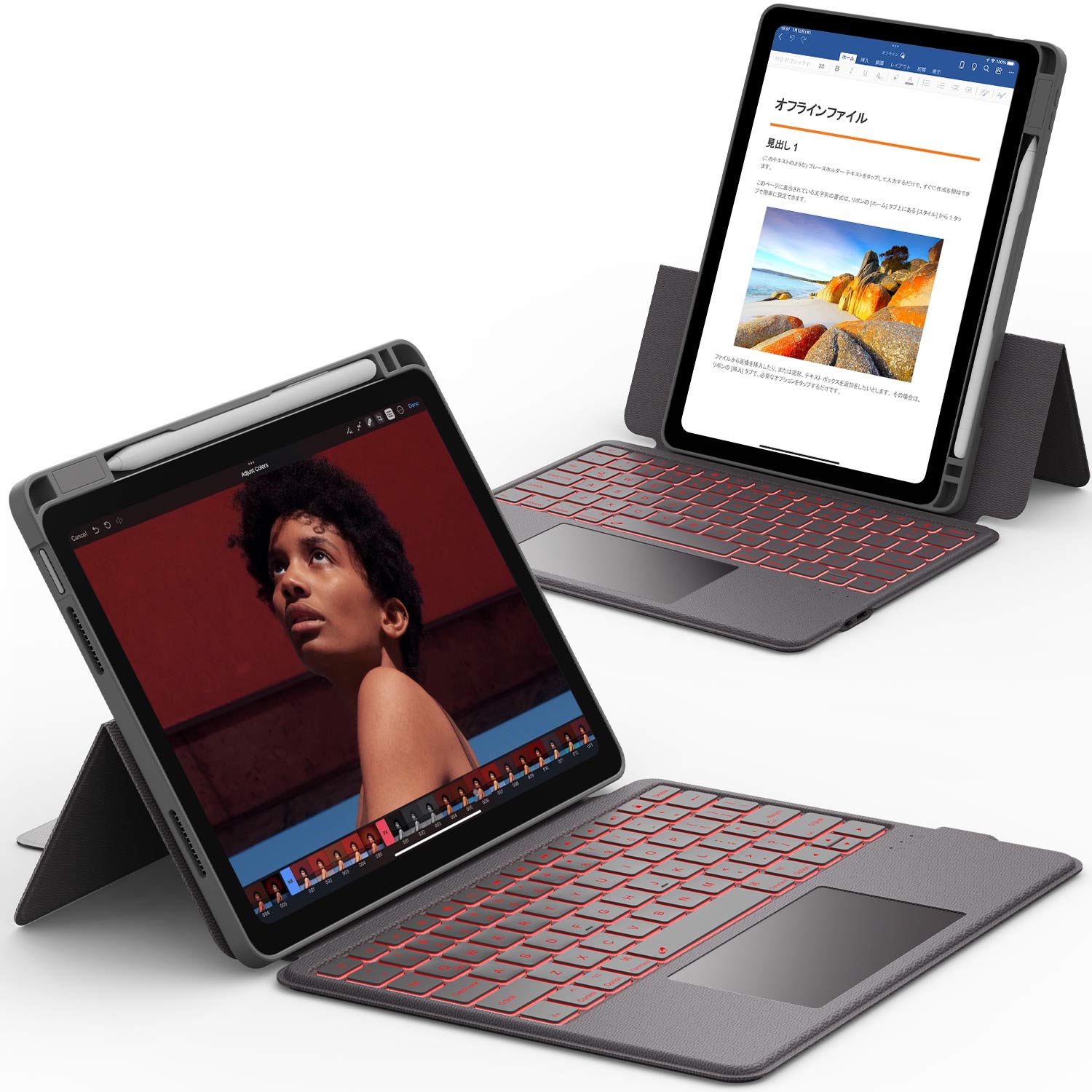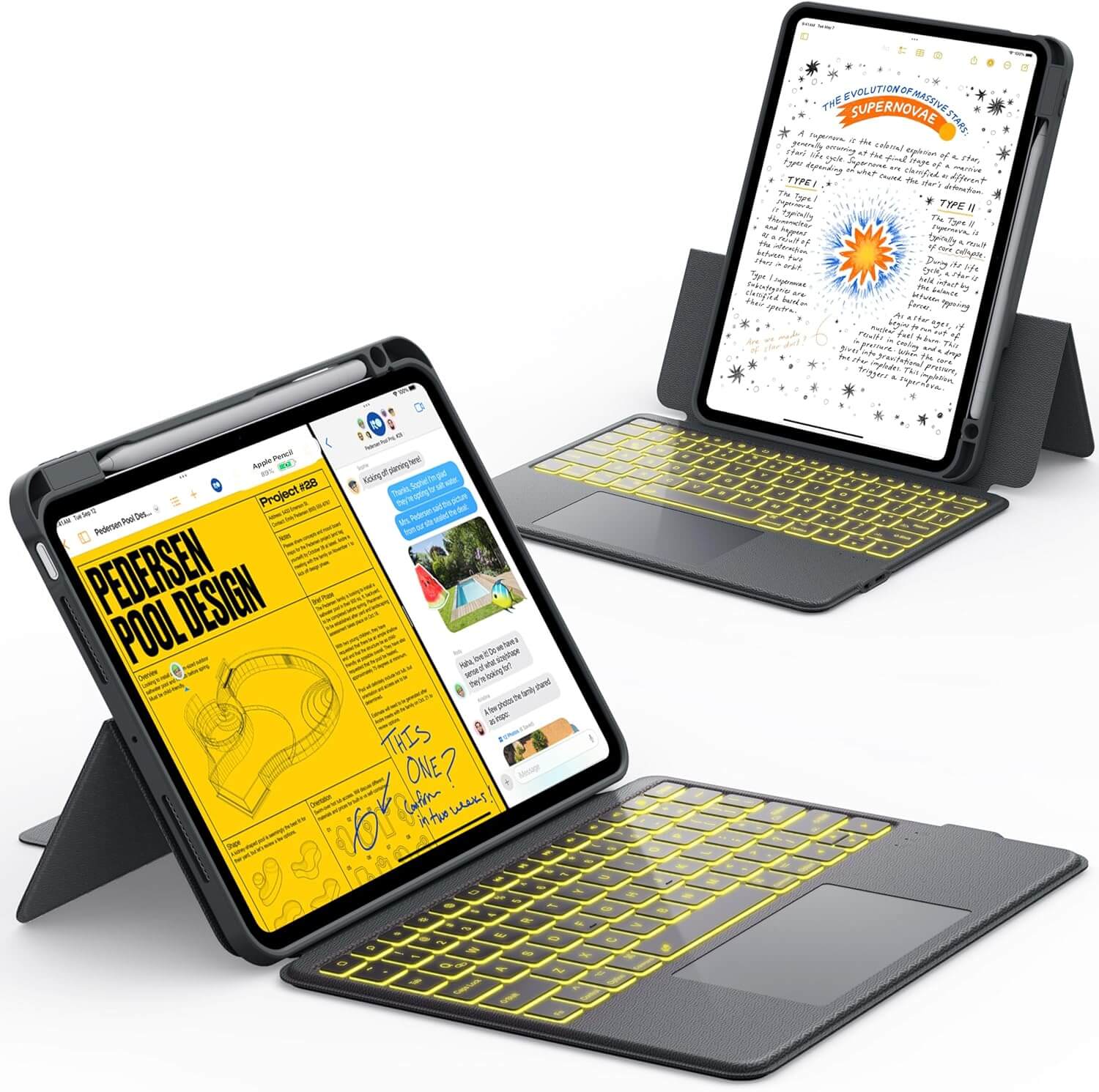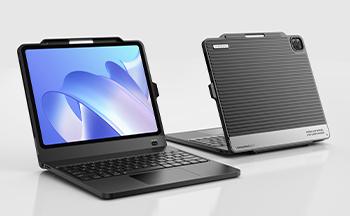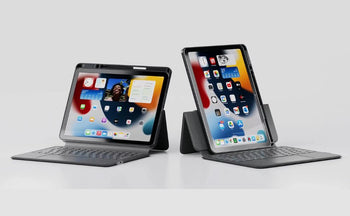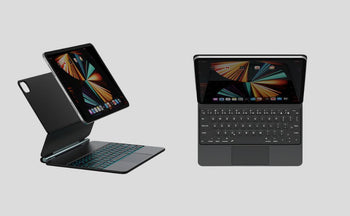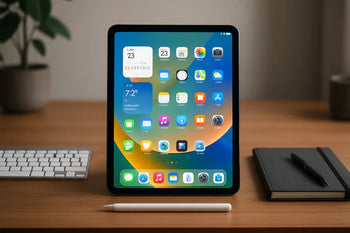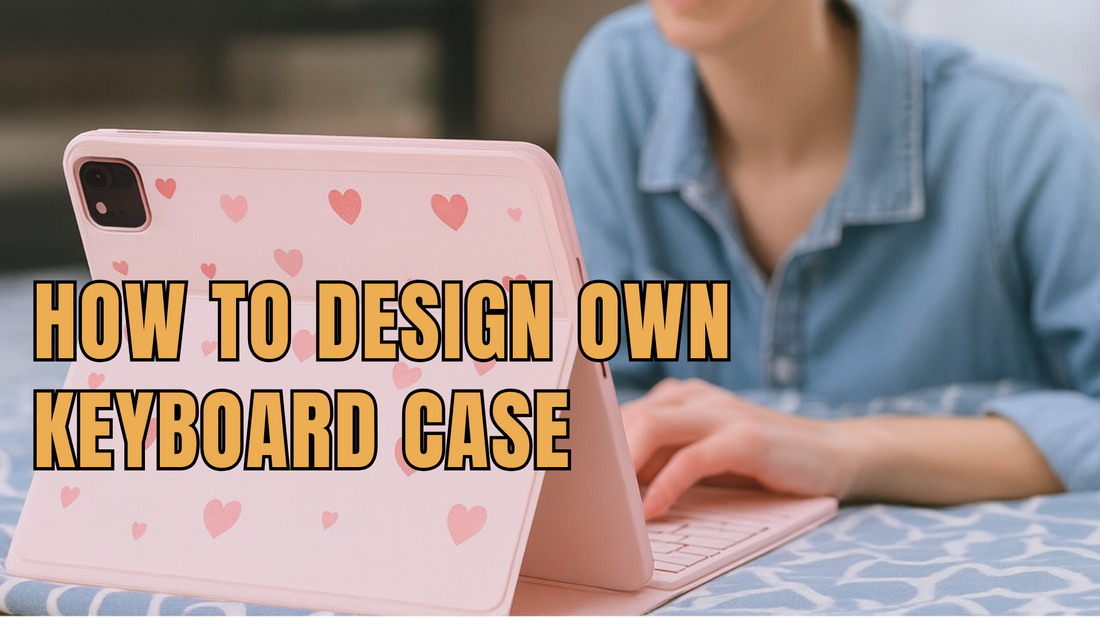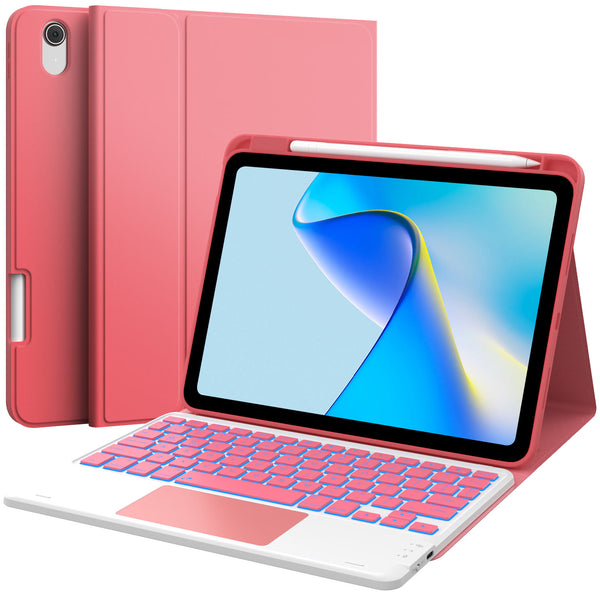Designing your own keyboard case for an iPad or tablet is a fun way to mix style, comfort, and protection.
Whether you want something slim for travel, professional for work, or colorful for everyday use, creating a case that fits your needs is possible with some planning.
If you are curious about how to design your own keyboard case and want to explore your options, keep reading to discover helpful tips and ideas.
What is a Keyboard Case?
A keyboard case is a protective cover for your tablet that includes a built‑in or detachable keyboard. It makes typing easier, protects your device from scratches, and often doubles as a stand.
A good keyboard case can turn your tablet into a mini laptop, protect your screen from damage, and add comfort for long typing sessions.
📌 If you want to browse some ready‑made options before starting your own design, check out this guide to choosing the best iPad keyboard case for protection.
Planning How to Design Own Keyboard Case

Before you start cutting materials or buying parts, it is important to plan. A clear plan will save time and help you avoid mistakes.
✅ Step 1: Measure Your Tablet Correctly
Every tablet has different dimensions, so accurate measurements are the foundation of a good design.
Make sure to note the height, width, thickness, and the location of buttons and charging ports.
✅ Step 2: Pick the Style of Case You Want
There are several common styles to choose from. Folio cases fold like a book, laptop‑style cases open like a traditional clamshell, and detachable cases let you remove the keyboard when you do not need it.
Think about how you use your tablet most often before deciding.
Check Related Products You Can Shop
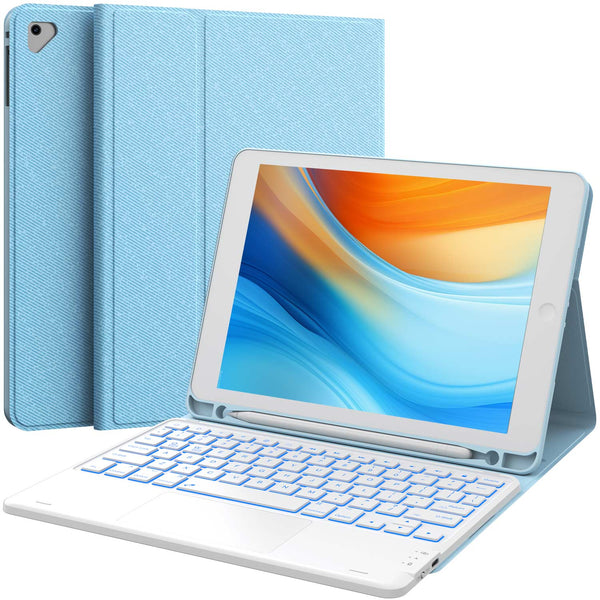
CHESONA Step Series Keyboard Case for iPad 6/5th gen/iPad Air 2/iPad Pro 9.7"
$42.98 $38.68
See ProductChoosing the Right Keyboard for Your Case
The keyboard is the heart of your design. Picking the right one will make the difference between a case you love and one you rarely use.
✅ Bluetooth vs Wired Keyboards
Most tablet keyboards today are Bluetooth because they are wireless and easy to connect. Wired keyboards are less common but may be useful if you want zero lag and do not mind a cable.
✅ Slim vs Mechanical Keyboards
Slim keyboards are lightweight and portable, which makes them ideal for tablet cases.
Mechanical keyboards are bulkier and not typically used in commercial cases, but they can be an option if you are building a custom DIY tablet keyboard case and do not mind extra size and weight.
Materials You Can Use for a DIY Keyboard Case
The material you use will affect how strong, stylish, and comfortable your case feels. Choosing wisely will also make your design last longer.
✅ Common Materials for Tablet Keyboard Cases
- ✅ Leather or PU leather for a professional look
- ✅ Silicone or fabric for flexibility and softness
- ✅ Polycarbonate or plastic for strong protection
✅ What is the Best Material for Keyboard Covers?
The best material depends on your goals. If you want premium style, leather is excellent. For lightweight protection, fabric or PU leather works well.
For durability, polycarbonate is a strong and affordable choice, though metals like aluminum are stronger but less common in tablet cases.
Step-by-Step: How to Design Own Keyboard Case

Now that you have your plan, it is time to put it into action. Follow these steps to design a case that fits your tablet perfectly.
✅ Step 1: Sketch or Mock Up Your Idea
Start with a simple drawing of how you want your case to look. You can use pen and paper or free design tools online to create a basic mockup.
✅ Step 2: Fit the Keyboard and Tablet Together
Position the keyboard so it aligns with your tablet. Make sure you can still reach all the buttons, speakers, and ports without removing the case.
✅ Step 3: Add a Stand or Hinge
Decide how your case will hold the tablet upright. You can use a foldable flap, a magnetic hinge, or a kickstand.
📌 For inspiration, discover how premium cases manage this in this guide to the right iPad Pro keyboard case.
✅ Step 4: Secure the Keyboard
Think about whether you want the keyboard to be fixed or detachable. Velcro, magnets, or custom slots are simple ways to keep it in place.
✅ Step 5: Customize the Look
Add personal touches like colors, patterns, or even a pen holder. Small details will make your case unique and enjoyable to use.
Safety tip: When working with cutting tools, adhesives, or magnets, always take proper precautions and avoid damaging your tablet or keyboard.
Extra Tips for Comfort and Usability
Even the best design can feel awkward if it is not comfortable. A few small adjustments can make your case much easier to use every day.
✅ Ergonomic Angles
Make sure your case lets you adjust the angle of your tablet for comfortable typing. A small tilt can prevent wrist strain.
✅ Keep it Lightweight
Heavy cases may look strong but can be tiring to carry. Try to balance durability with portability.
DIY vs Buying a Keyboard Case

If you are wondering whether to make your own or buy one, it helps to weigh the pros and cons. Both options have their benefits.
✅ Is it Cheaper to Build a Keyboard Case or Buy One?
Making your own can be cost‑effective if you already have tools and materials. Buying one may save time and give you a polished product right away.
📌 To explore top ready‑made picks, browse this 2025 ultimate guide to the best iPad keyboard cases for professionals.
✅ When DIY Makes Sense
DIY is best if you want something truly unique, or if you enjoy crafting. Buying is better if you need a case quickly or want guaranteed durability.
Troubleshooting Your DIY Keyboard Case
Even with a good plan, small issues can happen. Knowing how to fix them will save frustration.
✅ Common Problems and Fixes
- ✅ If the keyboard does not connect, check Bluetooth settings or charging.
- ✅ If the case feels loose, adjust the fit with extra material or padding.
- ✅ If the tablet slips out, use stronger magnets or elastic straps.
📌 For more tips, don’t forget to check out this troubleshooting guide for iPad keyboard cases.
Conclusion
Designing your own keyboard case is a rewarding project that combines creativity, function, and style.
By planning carefully, choosing the right materials, and adding personal touches, you can create a case that makes your tablet more useful and fun.
If you prefer to skip the DIY process, Chesona offers cute, minimalist, and professional looking iPad or tablet keyboard cases that are ready to use.
Don’t forget to shop Chesona protective iPad or Samsung cases for any model and explore their protective cases with built‑in keyboards for easier typing.
Frequently Asked Questions About Designing Keyboard Cases
Can you customize your own keyboard?
Yes, you can customize your own keyboard by choosing the layout, size, and design that fits your style. Many people add personal touches like colors, keycap designs, or even backlighting. Customization makes your device feel unique and more enjoyable to use.
How are keyboard cases made?
Keyboard cases are usually made by combining a protective shell with a keyboard that connects to the tablet. Materials like leather, plastic, or fabric are cut and shaped to fit the device. The keyboard is then attached securely while leaving room for ports and buttons.
What is a keyboard case called?
A keyboard case is often called a folio case, keyboard cover, or keyboard folio. These terms all describe a protective case that includes a keyboard for easier typing. Some designs are detachable, while others keep the keyboard fixed in place.
How to make your own keyboard layout?
To make your own keyboard layout, start by deciding which keys you use most often. You can rearrange the layout using software or by customizing a physical keyboard. This helps improve typing speed and comfort based on your personal habits.
Why are 60% keyboards so good?
60% keyboards are popular because they are compact and easy to carry. They remove extra keys but still keep the essentials, which makes them great for travel or small desks. Many people like the simple and clean design.
What is a magic keyboard case?
A magic keyboard case is a premium style of keyboard case that combines a slim design with a built‑in trackpad and strong hinge. It is known for giving the tablet a laptop‑like experience. Many people look for alternatives to this style when designing their own case.
